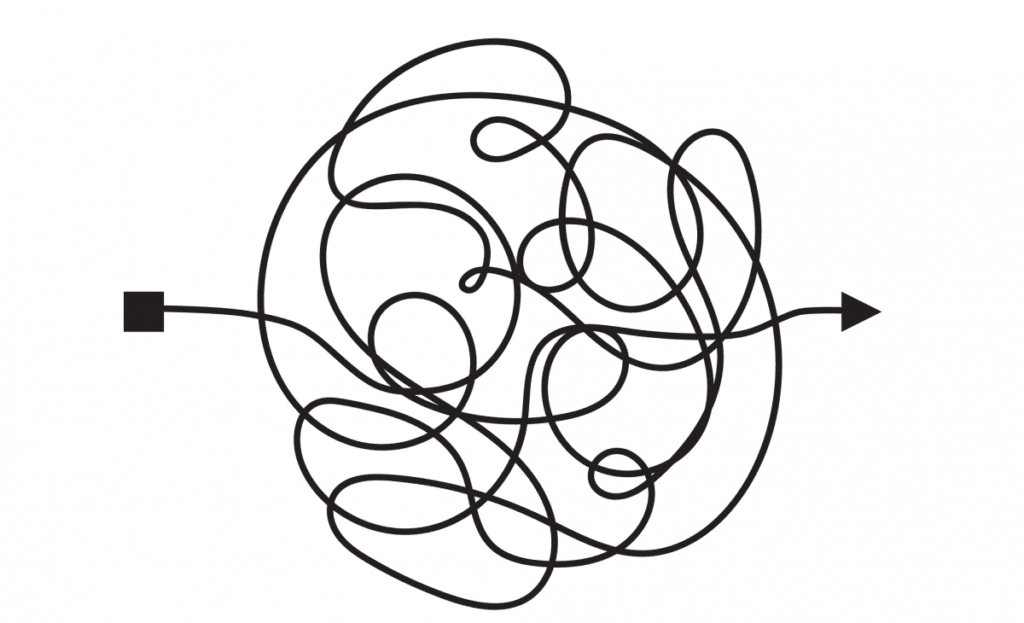Quick Links

]From meetings and presentations to answering emails, phone calls, and conversations around the water cooler, leaders spend around 80% of their time communicating. Given how the outsized portion of the workday they spend on it, one would assume leaders would be expert communicators.
Unfortunately, that’s not always the case. Businesses with more than 100 employees spend an average of 17 hours/week clarifying previous communications, and poor communication costs the average large organization (more than 100,000 employees) $62.4 million per year in lost productivity.
How can you avoid similar costs at your organization? To improve your effectiveness, we recommend you use the 5 C’s of communication as a guideline:
Based on our experience, context is what people struggle with the most when it comes to effective communication.
Context is the information that surrounds verbal or written communication. When you communicate face-to-face, the person or people with whom you are communicating have the benefit of context — your tone and body language, among other factors. These cues help your peers and employees understand and interpret your message — do you seem tense, indicating urgency? Do you seem annoyed?
Unfortunately, the modern workplace is moving further from in-person communication as the norm. Teams are often geographically dispersed, and a 2019 study showed that even in-office workers spend more than half of each day communicating digitally rather than in person.
And, as anyone who has ever mulled over a cryptic text from their significant other can attest, the context around written communication is significantly more difficult to assess. Recipients bring their own perceptions and biases to the table. Without enough context, a misunderstanding is almost guaranteed.
The solution? Spell it out.
Write down the context that is missing from written communications. Below are a few examples of different responses to the same question. The left column contains a typical response, the right column is a response with added context. Which do you think is more meaningful?
| Can you do this for me? | |
| I think I can do that. | I think I can do that, but I haven’t done it before. I know Bob can do it faster than me. Should I ask Bob if I can take some of his work off his plate so he can work on it? |
| Yes. | I can do it after I wrap up some loose ends for another project. I expect to be finished with that by noon and then I will work on this. |
| What is your status on X? | |
| I’m 50% done. | I’m 50% done and I am still on track for completing it on time. |
| There is a delay in receiving the equipment from the vendor. | I have a delay in receiving the equipment from the vendor. I have escalated it and will know by EOD today if it will arrive on time. |
Clearly, the right column answers give the recipient the information they need to avoid assumptions and the conflict they can create.
The next time you sit down to type out an email or instant message, step back and think about whether your communication has enough meaning or context in it. If you do, you should see an improvement in your communications and relationships at work.

Practical strategies to help you thrive in Leadership, Project Management, and more.

11 East 5th Street
Suite 300
Tulsa OK 74103
918-592-4121
888-392-7101
| Cookie | Duration | Description |
|---|---|---|
| cookielawinfo-checkbox-analytics | 11 months | This cookie is set by GDPR Cookie Consent plugin. The cookie is used to store the user consent for the cookies in the category "Analytics". |
| cookielawinfo-checkbox-functional | 11 months | The cookie is set by GDPR cookie consent to record the user consent for the cookies in the category "Functional". |
| cookielawinfo-checkbox-necessary | 11 months | This cookie is set by GDPR Cookie Consent plugin. The cookies is used to store the user consent for the cookies in the category "Necessary". |
| cookielawinfo-checkbox-others | 11 months | This cookie is set by GDPR Cookie Consent plugin. The cookie is used to store the user consent for the cookies in the category "Other. |
| cookielawinfo-checkbox-performance | 11 months | This cookie is set by GDPR Cookie Consent plugin. The cookie is used to store the user consent for the cookies in the category "Performance". |
| viewed_cookie_policy | 11 months | The cookie is set by the GDPR Cookie Consent plugin and is used to store whether or not user has consented to the use of cookies. It does not store any personal data. |